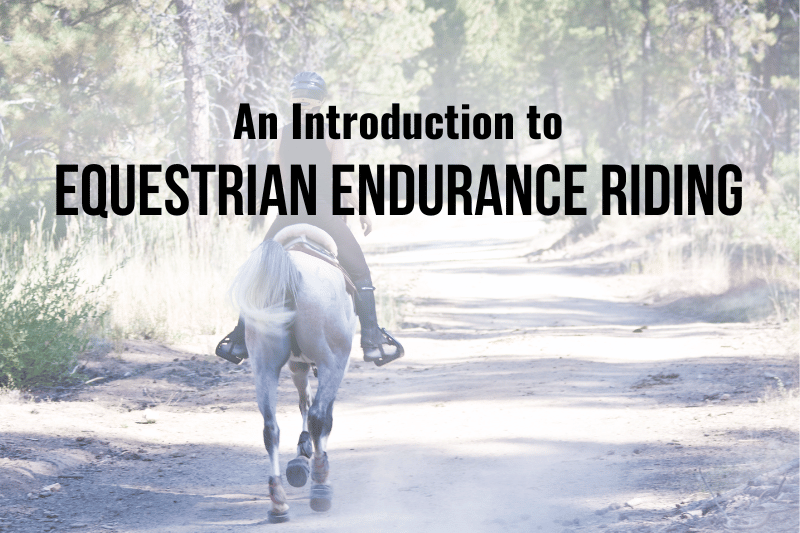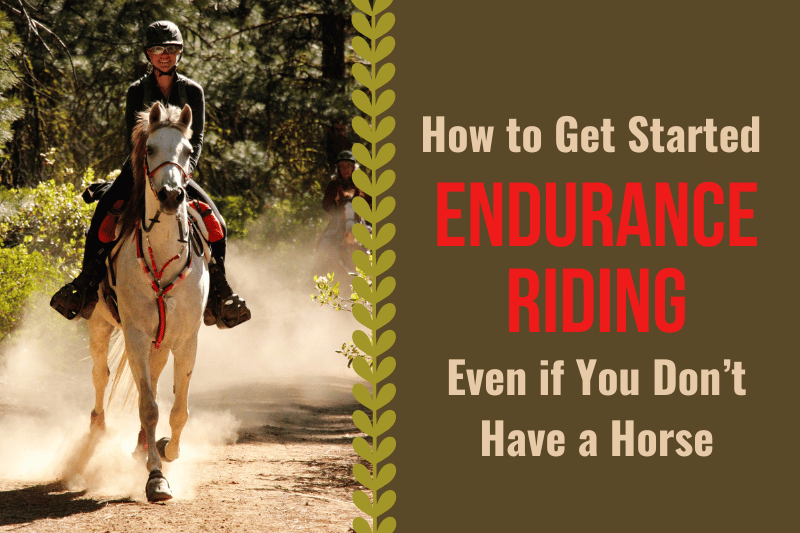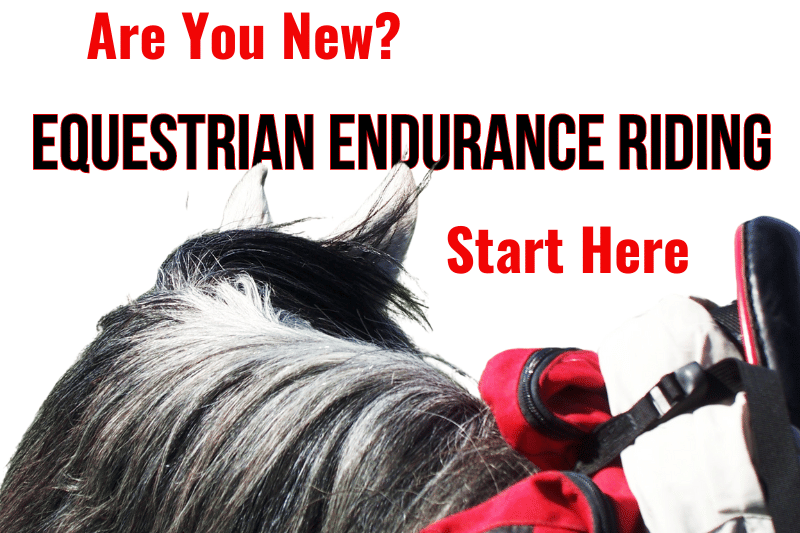What is Equestrian Endurance Riding?
Endurance riding is a sport in which teams of one horse and one rider race fifty miles or more over a marked course in a single day. Common endurance distances in the United States are 50 miles, 75 miles, and 100 miles.
Many endurance riding events also offer Limited Distance (LD) rides, which are shorter than 50 miles. In the U.S., most LDs are 25 or 30 miles long and serve as an introduction to the sport. They may also be an enjoyable event for horses and riders who can’t or don’t wish to compete in endurance distances.
In order to complete the event, a horse-rider team must finish within a pre-set time limit, and the horse must be judged “fit to continue” by a veterinarian.
Are Endurance Rides Races?
Equestrian endurance rides are races. The first horse-rider team to cross the finish line “fit to continue” wins. However, endurance riding is much like marathon running. Although it is technically a race, the vast majority of participants simply wish to have fun and complete the challenge.
The Best Condition award, granted to the horse who has shown the best combination of speed and readiness to continue on in excellent health, is often more coveted than first place.
Additionally, winners of the “turtle award” for finishing last always receive enthusiastic applause.
Are Endurance Rides Regulated?
In the U.S., most equestrian endurance rides are sanctioned by the American Endurance Ride Conference (AERC).
AERC provides a consistent set of rules to govern events. They also enforce a strict equine drug policy, promote trail preservation, provide educational materials, maintain horse and rider records, adjudicate grievances, and sponsor research.
Around the world, similar bodies govern the sport, typically with a focus on the welfare of the horse. The Federation Equestre Internationale (FEI) offers an avenue for riders to compete on an international scale.
Is Endurance Riding Safe for Horses?
Endurance riding is a challenging sport for both horse and rider. For this reason, many safeguards in place to protect the horses.
As in any equestrian sport, injuries and (rarely) fatalities do occur, but the vast majority of participants place the horses’ wellbeing as their highest priority.
Before, periodically during, and after an endurance event, each horse is inspected by a veterinarian for soundness and metabolic health. Veterinarians have absolute authority to pull a horse from the competition if it is in pain or danger. Riders may also pull their own horses at any time.
AERC prohibits cash purses or valuable prizes. All completers receive token awards, such as T-shirts. First place and Best Condition winners may receive slightly bigger awards, like horse blankets, but these prizes should never be big enough to motivate a competitor to override his or her horse.
Who Participates in Endurance Rides?
Endurance rides are open to riders of all ages and genders, and all compete together on the same course at the same time. Riders under the age of 16, known as Juniors, must be accompanied by an adult sponsor. Demographically, the majority of U.S. endurance riders are female.
Endurance rides are open to all equines, including any breed of horse or mule. Horses must be at least 4 years of age to participate in Limited Distance and at least 5 years of age to compete in endurance-distance rides.
Arabians and Half-Arabians are the most prevelant breeds used for endurance, but it is common to see Appaloosas, Morgans, mustangs, mules, gaited horses, Quarter Horses, and many others sharing the trail.
Where are Endurance Rides Held?
Equestrian endurance rides are held in most U.S. states and around the world.
Endurance rides typically cover many miles of natural terrain. Depending on their location, they may take riders through mountains, deserts, farmland, and parks. Routes may include singletrack and double-track trails, paved or gravel roads, and even lead riders cross-country with only ribbons to mark the way.
Endurance rides originate from a ride camp, where competitors bring their horses and set up temporary living quarters. In most cases, the marked trail forms one or more loops from camp, though there are some point-to-point rides as well.
How Can I Get Started in Endurance Riding?
Endurance riders comprise a generous community that welcomes new participants. You can get started by contacting AERC, a regional endurance riding club, or simply by reaching out on Facebook to find a riding partner or mentor.
Here are a few social media pages to follow:
AERC Facebook Group for AERC members and others interested in the sport
Green Bean Endurance Challenge Facebook Page for new and aspiring endurance riders
The Sweaty Equestrian Facebook Page for followers of this blog
You can also check out my post on How to Get Started Equestrian Endurance Riding (Even if You Don’t Have a Horse).



